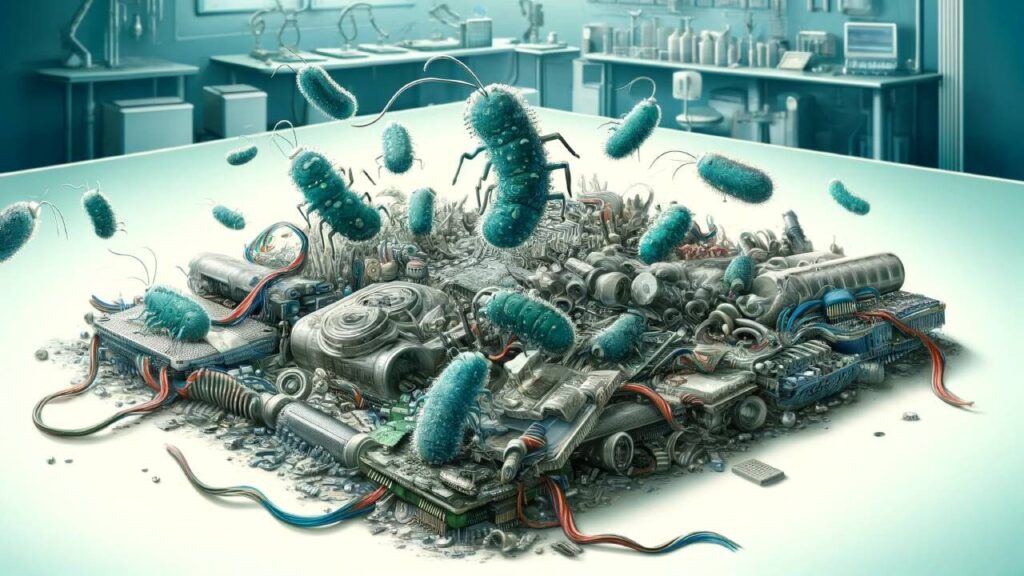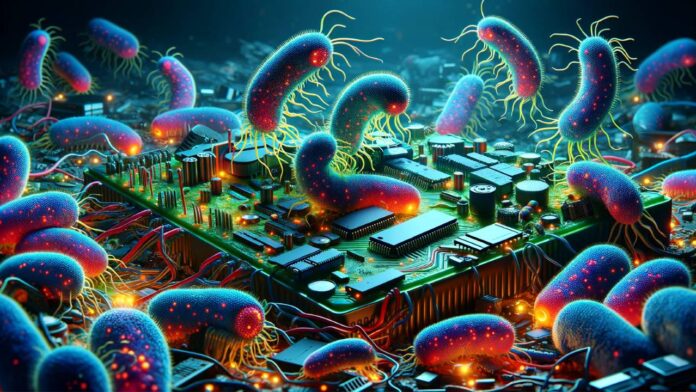Research conducted jointly by BOKU Tulln and IMC University of Applied Sciences Krems has revealed a groundbreaking method to recover valuable materials from electronic waste using bacteria. This innovative approach shows great potential for sustainable recycling of critical raw materials like rare earth elements.
How Bacteria Turn Electronic Waste into Treasure
With the rapid increase in electronic device usage and shorter product lifespans, electronic waste is piling up, containing valuable metals and rare earth elements. Traditional recycling methods often fall short and can cause environmental harm. However, this new method leverages the natural processes of specific bacteria to recover these valuable materials in an eco-friendly way.

The Process: Bioleaching and Bioaccumulation
The research focuses on two biotechnological processes: bioleaching and bioaccumulation.
- Bioleaching: This process involves using microorganisms to produce acidic compounds that can dissolve metals from electronic waste. Specific bacteria like Acidithiobacillus thiooxidans and Alicyclobacillus disulfidooxidans, isolated from an acidic mining lake in the Czech Republic, are capable of thriving in low pH environments and oxidizing inorganic compounds to gain energy. These bacteria effectively break down complex materials in electronic waste to release rare earth elements.
- Bioaccumulation: After bioleaching, the dissolved rare earth elements are recovered through bioaccumulation, where certain microorganisms selectively absorb and accumulate metals from their environment. The researchers used Escherichia coli bacteria to develop a system that efficiently accumulates rare earth elements, acting like a metal sponge to trap these elements within their cells.
Achievements and Environmental Benefits
In laboratory experiments, this two-step method achieved up to 85% recovery of rare earth elements from electronic waste, which is significantly higher than current chemical recycling methods. Additionally, this approach is environmentally friendly, consuming less energy, emitting fewer greenhouse gases, and minimizing hazardous waste production compared to traditional methods.
Challenges and Future Strategies
Despite these promising results, there are challenges to scaling up this bio-based recycling method. The complex and variable composition of electronic waste, particularly the presence of other metals like iron, copper, and aluminum, can affect the efficiency of rare earth element recovery. To overcome these challenges, researchers are exploring several strategies:
- Adaptation: Enhancing the tolerance of microorganisms to high metal concentrations through a process called morbidostat, which gradually exposes bacteria to increasing metal levels.
- New Materials: Using materials like lignin hydrogel in the bioleaching and bioaccumulation processes to reduce the concentration of interfering metals.
These strategies aim to improve the robustness and efficiency of the recycling process, making it viable for industrial applications.
What Do You Think?
This innovative method has the potential to revolutionize electronic waste recycling, turning landfills into sources of valuable materials while being environmentally sustainable. What are your thoughts on this technology? Share your views in the comments below!

